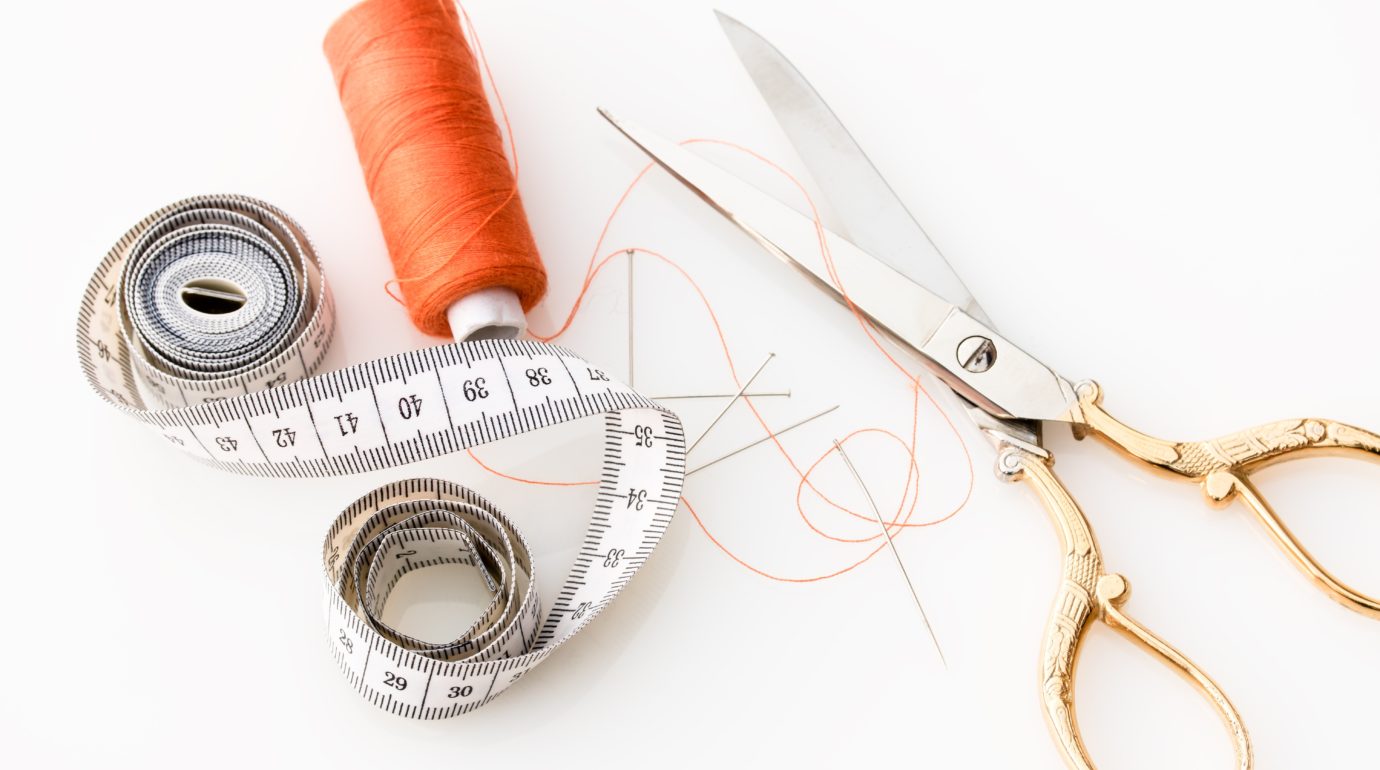When a performer enters, audiences know something about the character before she says a word. Is she wealthy or poor? Conventional or unconventional? Is he our contemporary? Did he live in the distant past? Costumes help create characters and tell their stories.
So we began to wonder: What does their own personal clothing say about the costume designers who wear it? We asked five busy costume designers to share their insights into designing for characters—and for themselves.
ASA BENALLY is a 2016 graduate of the Yale School of Drama who grew up on a Navajo reservation in northern Arizona. His aesthetic, Benally says, comes from an interest in history and strong individuals. When designing for characters, he believes, nuances matter. “If he’s wearing a simple thing like a dress shirt,” Benally wonders, “what does it mean that he never buttons it, and his sleeves are rolled up?”
The designer’s own dress choices are eminently practical. Because Benally’s job involves carrying armloads of clothes, he selects jackets and blazers with high-cut arms and avoids bulky fabrics. And since he’s constantly crouching, digging through bolts of fabric, he favors pants with a little stretch in them.
“At my busiest, I can be working on four or five different productions and many, many characters,” Benally says. “In a 24-hour period, I could be going to a fitting, swatching another project, jumping on a plane and having dinner with a director, then going to a show and opening-night party,” he says, explaining that he has to transition from work to business to party as easily as an actor undergoing quick changes backstage. “What do I wear if I can’t come back home and do a full costume change?” A streamlined, flexible wardrobe solves the problem.
LINDA CHO, a New York City-based designer whose costumes have been seen on Broadway and international stages—not to mention such major U.S. theatres as the Public in New York City, La Jolla Playhouse in San Diego, D.C.’s Arena Stage, Minneapolis’s Guthrie, and Chicago’s Goodman—wants to inspire confidence in her taste when she dresses for work.
At home, she tends to dress for herself, choosing clothes that are comfortable and fit well. “I tossed my sad, baggy sweatpants a few years ago when I realized that they may have been comfortable but made me feel the way they looked.”
Though she buys clothing to wear at work and at home, she sees formal occasions as a chance to express herself: She often designs dresses for such events and has them built by a theatrical costume shop. And while the palette of both her work and home wardrobe mostly comprises neutral shades, she tends to wear bright colors for celebratory times.
When creating her dresses for her wedding and the Tonys—she won for A Gentleman’s Guide to Love and Murder and was nominated for Anastasia—she says she was thrilled to design garments she loved, made by people she loves. For the 2017 Tony Awards, “I designed a fuchsia dress in a vibrant, richly patterned Indian sari—it embodied my excitement for the event.”
AMBER MARISA COOK has designed for midsize theatres in the Midwest, including the Williamston Theatre, Tipping Point, and Detroit Repertory Theatre, all in Michigan, and at the Conservatory of Theatre and Dance at Southeastern Missouri State University, where she teaches. She’s also worked as an over-hire in the costume shop at NYC’s Lincoln Center. She is completing a book about custom digital textile design, due out in 2019 from Focal Press.
When designing, Cook says she thinks about the journey a character is going through and tells that story through layers of detail—including character-defining trim and accessories. “It’s not just about a beautiful dress,” she declares.
Cook, who believes it’s important to have an identifiable sense of style, says her personal aesthetic is eclectic. “I buy interesting things when I travel, things that evoke a memory or have a story. I like things that have character and whimsy. I like wearing denim and interrupting that look by pairing it with blazers, interesting jewelry, and shoes.”
When working she dresses professionally, but always wears flexible clothing that will be comfortable when she bends for fittings. Her clothes must be versatile. Says Cook, “I dress in layers, so I can remove things that might be a hindrance, like a long scarf. I shape-shift within the day. I appreciate things that are classic, but that’s not where I tend to go. I often wear oversized black T-shirts, because I can add things and change them. I have a sort of macabre sense of humor.” A favorite bracelet has real beetles set in resin.
ANA KUZMANIC, born in Yugoslavia and based in Chicago, teaches at Northwestern University while designing for Broadway, Off-Broadway, stages in the United Kingdom and Australia, and top U.S. theatres, including those close to home: the Goodman, Lyric Opera, Steppenwolf, Lookingglass Theatre, Chicago Shakespeare Theater, and the House Theatre of Chicago.
When designing for a play, Kuzmanic asks herself, “Where would these characters shop? How much time do they have to get dressed? Who is in their social circle?” She relies on historic research and art, and notes that contemporary fashion and photos of celebrities influence many. “Fabric quality outlines the period costume, and fashion labels the contemporary one,” she observes.
The former fashion designer created her own clothes when she was younger. This allowed her to dress in a unique way and accommodate the extra length her 6’1″ frame needs. “I’m not an impulsive shopper, which makes shopping for myself a nightmare,” she admits, noting that in the dressing room she doesn’t just check how a garment looks on her but also how it’s made.
As a mom with a busy schedule, Kuzmanic likes to be able to get up and go in the morning. Keeping a closet of mostly black clothes, with very little patterning and large uninterrupted surfaces, gives her flexibility. She likes cozy sweaters and jackets and selects strong accessories to complete outfits. “I don’t like complicated fashions,” she says of her men’s-wear-influenced wardrobe, noting that an ideal combo might be a pair of high-waisted slacks that can go with different tops and one of her many pairs of ankle boots.
KAREN PERRY, who lives in Santa Monica, Calif., designs for theatres ranging from the Guthrie in Minneapolis to Dallas Theater Center, NYC’s Public Theater and Signature Theatre, Chicago’s Goodman Theatre, and the Pasadena Playhouse in California. Her go-to questions for stage fashion are: What are the characters doing? Where are they from? What’s going on with them on the inside?
Perry grew up in New York, the oldest in her family. “I was in love with arts and crafts and with fabric,” she recalls, adding that when she didn’t have fabric, she would dress paper dolls. She drew and painted and reupholstered furniture. A shortage of money in her working-class family gave her an incentive to make her own clothing. Today she sometimes designs her clothes, sometimes buys them. “I have a gene for shopping,” she confides. She frequents Indian and Asian stores and thrift shops as well as the bargain bins at department stores—things the stores can’t sell are usually more interesting to her than the rest.
Perry, who designed for Gregory Hines for 15 years and has also designed nine of August Wilson’s plays, once created a floor-length white shearling coat from two short jackets; now she packs it when she works in cold climates.
“I’m certainly not a girly girl,” Perry specifies, though when she was young her grandmother often decked her out in fancy dresses with crinoline. “I could not wait until I could have a pair of jeans,” she recalls. She preferred a knapsack to a book bag, and today has a cache of fabulous knapsacks she prefers to purses. But if she’s going someplace special, as she did when accepting a lifetime achievement award in costume design at the National Black Theatre Festival, she designs her own gown and “reinvents” herself.
Davi Napoleon writes regularly for Live Design and is the author of Chelsea on the Edge: The Adventures of an American Theater, which explores the beginnings of the funding crisis in the U.S. theatre field.












